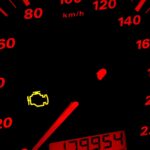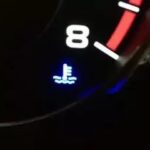For drivers in regions with harsh winter conditions, a functioning Headlight Washing system is more than a luxury—it’s a necessity. The constant barrage of road salt, slush, and grime can severely obscure headlight lenses, dramatically reducing visibility and safety, especially at night. While many vehicles are equipped with this system, their reliability can be questionable, often failing precisely when they are needed most. If you’re experiencing issues with your headlight washing system, or looking to restore it to its optimal function, this guide will walk you through the common problems, diagnosis, and repair steps to ensure your headlights are always clear.
Understanding the Headlight Washing System
The headlight wash-wipe system is designed to keep your headlights clean, ensuring maximum illumination and road safety. It’s a system comprised of several key components working in concert. To effectively troubleshoot and repair any issues, it’s essential to understand these parts and their roles.
Components of the Headlight Washing System
-
Dedicated Washer Pump: Unlike your windshield washer system, the headlight washing system utilizes a separate pump. This pump is usually located near the main washer fluid reservoir, often underneath it. This separation ensures that the higher pressure needed for headlight cleaning doesn’t affect the windshield washer operation.
-
Actuators and Wiper Assemblies: These are the mechanical arms and blades (or sometimes just spray nozzles) that physically clean the headlight lens. Each headlight typically has its own actuator and wiper assembly. These are mounted to the headlight frames and are designed to extend and wipe or spray the lens when activated.
-
Control Module: The brain of the operation is the control module. This electronic unit manages the timing and operation of the washer pump and actuators. It receives signals to activate the system, usually in conjunction with the windshield washer system or headlight activation.
Common Problems and Diagnosis
Like any automotive system exposed to the elements, the headlight washing system is prone to various issues. Identifying the symptoms can help pinpoint the problem area and streamline the repair process.
Washer System Issues
- Fluid Siphoning: If you notice your washer fluid disappearing rapidly without frequent use, it could indicate a siphoning issue. This is often caused by a faulty non-return valve within the washer system, allowing fluid to drain back into the reservoir or leak out.
- Clogged or Malfunctioning Squirters: Similar to windshield washer nozzles, headlight squirters can become clogged with debris or mineral deposits, reducing or blocking the spray. They can also fail mechanically, preventing proper fluid delivery.
Control Module Problems
The control module is a frequent culprit in system malfunctions, largely due to its vulnerable location.
- Corrosion and Water Damage: Typically located behind the headlight or indicator housing, the control module is often exposed to moisture, road spray, and temperature fluctuations. This harsh environment can lead to corrosion on the connectors and internal components, causing electrical failures.
- Cracked Housing: The module’s housing, often made of plastic with a riveted metal bracket, is susceptible to cracking, especially around the rivet points. Cracks allow water ingress, which can become trapped inside the waterproof unit, further damaging the electronics.
Actuator and Linkage Issues
The actuators and their associated linkages are mechanical components working in a dirty and exposed environment, making them prone to seizing and wear.
- Seized Pivots and Linkages: The pivots and linkages that allow the wiper arms to move can become seized due to corrosion, lack of lubrication, and accumulated grime. This can prevent the wipers from moving or cause them to move erratically, straining the actuator motor.
- Electrical Faults within Actuators: Actuators themselves are complex units, often containing small motors, gears, and switches. Electrical failures within the actuator, such as a faulty motor, brushes, internal switches, or thermal switch, can render the system inoperative.
Step-by-Step Repair Guide
Repairing your headlight washing system can range from simple fixes to more involved component replacements. Here’s a breakdown of repair steps for each common problem area. Before starting any repairs, it’s strongly recommended to disconnect the power feeds to the system (typically a Grey/White wire from the lights and a Violet/Black wire from the washer motor feed) to prevent accidental activation and potential damage during troubleshooting.
Control Module Repair
- Accessing the Module: Locate the control module, typically behind the headlight or indicator unit. This often requires removing the headlight grille and sometimes the indicator itself.
- Inspection: Once accessed, carefully inspect the module for signs of corrosion, cracked housing, and dampness. Pay close attention to the electrical connectors.
- Cleaning Connectors: If corrosion is present, gently clean the connectors using a wire brush or electrical contact cleaner.
- Module Disassembly (Advanced): If internal damage is suspected, the module can be carefully disassembled. Scrape away the rubber potting material and gently pull out the bottom face of the unit.
- Component Repair/Replacement: Inside, you’ll find a circuit board with discrete components. Faulty relays or other components can potentially be identified and replaced with readily available electronic parts. However, this requires electronic repair skills.
- Waterproofing and Reassembly: When reassembling, consider adding extra waterproofing to the module housing to prevent future water ingress. Ensure the housing is securely closed to protect the internal electronics. Relocate the module to a drier location if possible.
Actuator Repair
Actuator repair can be more mechanically intensive and may require patience.
- Electrical Testing: Before mechanical disassembly, test the actuator electrically. Use a multimeter to check for continuity and resistance (around 32 Ohms) between the brown ground wire and other terminals. This helps determine if the motor and internal circuits are intact.
- Lubrication: Apply penetrating oil to the actuator shaft and pivots. Cover the shaft with a plastic bag or heat shrink to keep the oil concentrated and allow it to penetrate overnight.
- Powering the Actuator: Connect the brown wire to ground and apply 12V to each of the other terminals in turn to test motor function. If the motor doesn’t run, try reversing polarity. If it runs intermittently or stalls, it indicates potential seizing or internal motor issues.
- Linkage and Pivot Disassembly: If the actuator is seized, carefully disassemble the linkages and pivots. Clean away corrosion, lubricate thoroughly with grease, and reassemble. For seized link arms with polymer bushings, replacement might be necessary due to potential wear after corrosion.
- Actuator Disassembly (Advanced): If the actuator motor is electrically faulty or seized internally, disassembly might be required. This involves carefully cutting open the back of the housing (about 1 inch from the end).
- Internal Component Repair/Replacement: Inside the actuator, you can access the motor, thermal switch, brushes, and cam switches.
- Motor Testing: Apply voltage directly to the motor terminals to test its function.
- Thermal Switch: Test for continuity when cold. Replace if faulty.
- Brushes: Inspect brushes for wear and replace if necessary.
- Cam Switches: Ensure cam switches click when the motor shaft is rotated manually. Avoid disturbing the cam disc unless necessary, as reassembly can be tricky.
- Reassembly and Waterproofing: After repair, reassemble the actuator carefully. Consider using heat shrink tubing instead of the original rubber seals for better waterproofing of the actuator shaft.
Retrofitting and Maintenance
Retrofitting Headlight Washing System
If your vehicle wasn’t originally equipped with headlight washers, retrofitting is possible as the wiring loom is often partially pre-installed. It involves:
- Installing the additional washer pump and reservoir (if needed).
- Mounting the actuator and wiper assemblies to the headlight frames.
- Modifying or replacing headlight grilles and bezels to accommodate the wipers and squirters.
- Connecting the wiring harness to power sources (lights, washer motor) and control module.
Preventative Maintenance Tips
- Regular Cleaning: Periodically clean your headlight lenses to reduce the workload on the washing system.
- Washer Fluid with Additives: Use quality washer fluid with additives that help prevent freezing and nozzle clogging.
- Inspect and Lubricate: Regularly inspect the actuator linkages and pivots for corrosion and apply lubricant as needed to prevent seizing.
- Check Non-Return Valve: If you suspect fluid siphoning, check and replace the non-return valve.
- Module Protection: Consider relocating or further waterproofing the control module to prolong its life, especially in damp climates.
Conclusion
A properly functioning headlight washing system is crucial for maintaining optimal visibility and safety in challenging driving conditions. By understanding the components, common problems, and repair procedures outlined in this guide, you can effectively diagnose and fix issues, or even retrofit the system to your vehicle. Regular maintenance and prompt attention to problems will ensure your headlights remain clean and bright, enhancing your driving safety and peace of mind. If you are uncomfortable performing these repairs yourself, always consult a qualified automotive technician.

